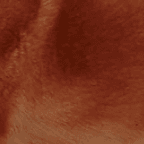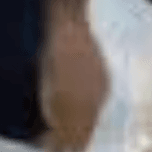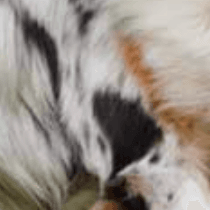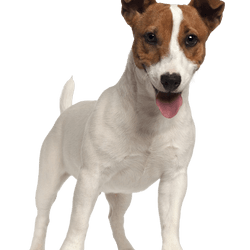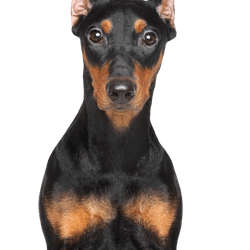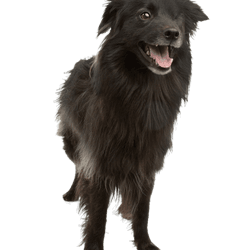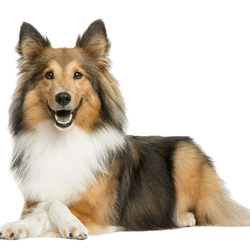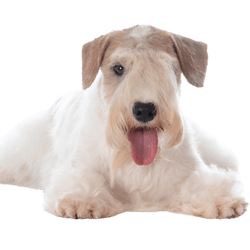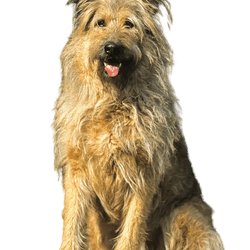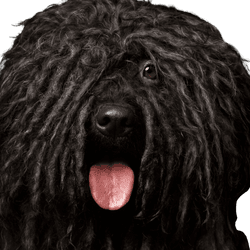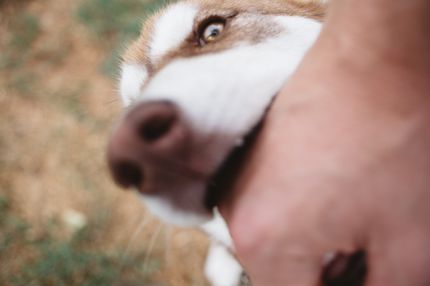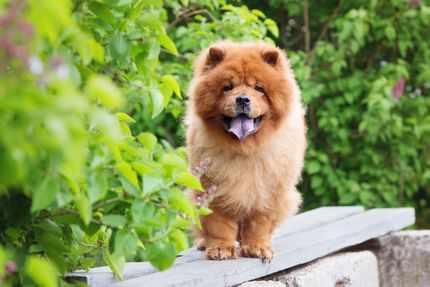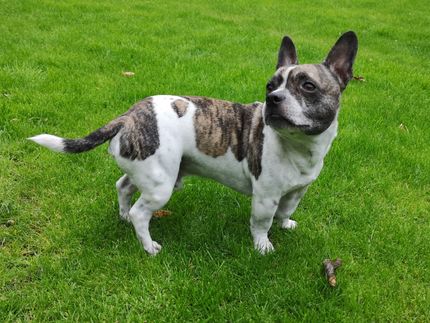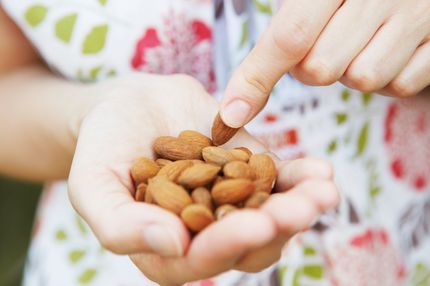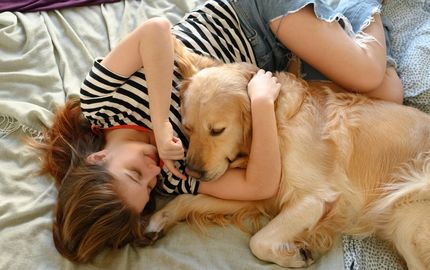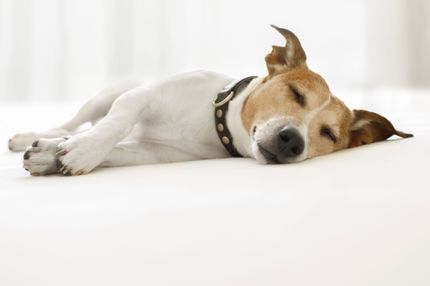Facts & Origin
Origin and history of the Miniature American Shepherd
The Miniature American Shepherd comes from the USA and was bred from the Standard Australian Shepherd. This originally comes from Australia. It was a widespread herding dog there and was bred purely for performance. The size of the dogs was variable and there have always been large and small representatives of the breed.
At the end of the 1960s, some dog owners in the USA discovered their love for the small Aussies. They began breeding a small version of the Australian Shepherd . From the outset, they set themselves the goal of preserving the lovable character, intelligence and activity of the large Aussies. They have been listed in the National Stock Register since 1980: There, the dogs were originally listed under the name Miniature Australian Shepherd.
In 2011, the AKC (American Kennel Club) included the breed in the breed registration process. The new breed to be registered was given the name Miniature American Shepherd. In 2015, the Miniature American Shepherd wasrecognized by the AKC as an independent breed. In 2019, the VDH in Germany followed suit and also recognized the breed. The Miniature American Shepherd wasprovisionally recognized by the FCI in September 2019 (Group 1, Section 1, Standard Number 367).
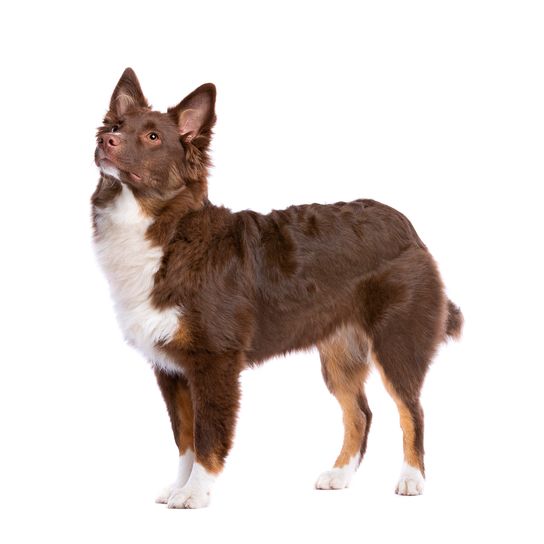


| Alternate Name | Miniature American Shepherd, Miniature Australian Shepherd |
| Origin | USA |
| Life expectancy | 10 - 13 years |
| Care requirements | high-maintenance |
| Activity level | high |
| FCI group | Sheepdogs |
| AKC group | not recognised |
| KC group | working group |
Miniature American Shepherd mixes
Attitude, character and temperament of the breed
Typical character traits of the Miniature American Shepherd
These small herding dogs arespirited bundles of energy and like nothing less than boredom. If you want to take a Miniature American Shepherd into your family, you should plan long walks every day . Play and training sessions are also important, your little American needs mental challenges just as much as physical exercise. Thanks to his quick perception, he will master little tricks in no time at all. A Miniature American Shepherd is not a dog for cauchpotatoes, although he loves his cuddles on the sofa. He adapts to the living conditions in his family and gets on well with children. He accepts other dogs or animals that already live in the household.
Upbringing and activity options
Originally, they are typical herding dogs that were also used to guard the house and farm. Today you will find Mini Americans as family and companion dogs. It is impossible to imagine dog sports grounds without them. Here they dash through tunnels and over hurdles like lightning in agility, inspire in obedience, flyball and many other sports, as well as in herding trails. Recently, the little dogs have often been seen in action as therapy dogs.
A Miniature American Shepherd is easy to train and is well suited for dog beginners. It is not a list dog.
Character
Usage
Breed diseases and health maintenance
The Miniature American Shepherd usually lives to be around 13 years old. The following diseases are more common in this breed:
- MDR1 defect
- Collie Eye Anomaly
- Cataract
- Progressive retinal atrophy
Miniature American Shepherd breeding and purchase
The Club für Australian Shepherd e.V. looks after the breed in Germany and maintains the stud book.
It ensures that the breeding standard is maintained. Only healthy animals should be approved for breeding.

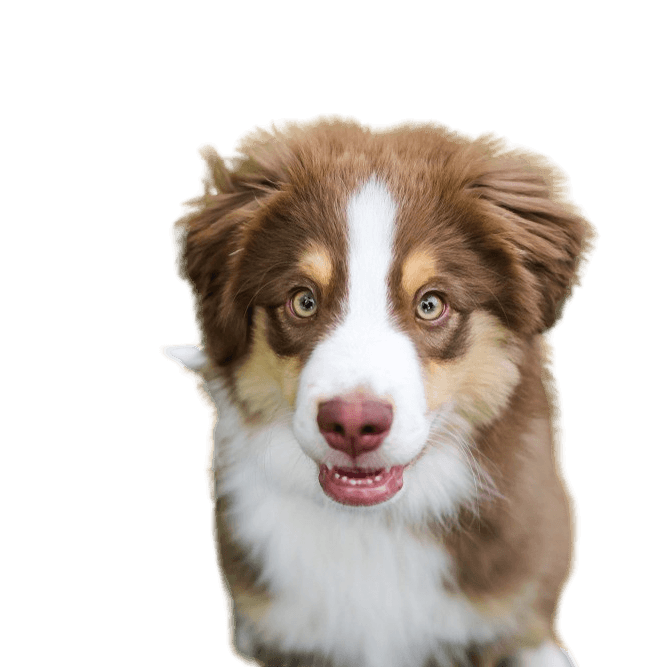
Breed characteristics of the Miniature American Shepherd
The Miniature American Shepherd is classified by the FCI in Group 1 (herding dogs and driving dogs (except Swiss Mountain and Cattle Dogs)), Section 1(Sheepdogs), without working test .
Movement, size and weight
The height at the withers of the Miniature American Shepherd varies according to sex. For males it is between 35.5 cm and 46 cm, while for females a height of 33 cm up to and including 43.5 cm is accepted. The weight should be healthy according to the individual size, sex and substance of the dog.
The Miniature American Shepherd moves with a flowing, free, light and supple gait. The stride is well balanced and ground covering. Both the front and hind legs move straight and parallel to the centerline of the body. At higher speeds, the front and hind legs converge towards the center of gravity of the body, while the back remains firm and straight. At the trot, the head is carried in its natural position with the neck extended forward and the head almost in line with or slightly above the topline. The dog should be able to move quickly in a different direction or at a different gait.
The head
The skull is flat to moderately round and may have a slight occipital protuberance . The width and length of the skull are identical. The stop, i.e. the area between the forehead and the bridge of the nose, is moderately pronounced and defined.
The facial skull also has characteristic features. The nasal bridge varies depending on the coat color. Red and red merle-colored dogs have a liver-colored nose leather, while blue and black dogs have a black nose pigment. Fully pigmented nasal sponges are preferred, while incomplete pigmentation is a fault, with a severe fault including 25 to 50 percent lack of pigmentation on the nose leather.
The muzzle
The muzzle of the dog is of medium width and depth. It tapers gradually to a rounded tip without appearing heavy, square, pointed or loose. The length of the muzzle corresponds to the length of the skull. Viewed from the side, the muzzle and skull are set at a slight angle to each other, with the front of the crown at a slight angle to the nose.
The dog's lips should be pigmented to match the coat color and be close fitting. The dentition should show a complete scissor bite , whereby broken, missing or discolored teeth due to an accident do not result in a deduction of points. However, a forward or back bite will lead to disqualification.
The eyes & ears
The eyes of the Miniature American Shepherd are slanted and almond-shaped. They should neither protrude nor be sunken and should be proportionate to the head. The eyes can appear in a variety of colors, such as brown, blue, hazel, amber or any combination thereof, including flecks and marbling. In red and red merle colored dogs, the eye rims are completely red (liver brown) pigmented, while black and blue dogs have complete black pigmentation. Blue merle and black dogs have black eye rims, while red merle and red dogs show liver (brown) pigmentation. The expression of the eyes is alert, attentive and intelligent. The gaze can be reserved or attentive towards strangers.
The ears of the Miniature American Shepherd are triangular, of moderate size and set high on the head. When fully alert, they can tilt forward or stand to one side as rose ears . However, prick ears or drooping ears are a serious fault.
The body
The Miniature American Shepherd is characterized by a firm, clean neck that is proportional to the body and of medium length. The neck is slightly arched and has a good transition to the shoulder area.
The body of the Miniature American Shepherd is firm and in good condition. The topline, i.e. the back, is firm and straight when standing and moving from the withers to the hip joint. The withers are characterized by elongated, flat shoulder blades that lie close to the withers and are sloping. The back remains firm and straight from the withers to the hip joint, both when standing and moving . The loins are strong and broad when viewed from above, and the croup slopes moderately. The chest is full and deep, reaching to the elbow, with well sprung ribs. The lower profile is slightly raised and the belly is well developed.
The tail
A docked or natural stub tail is preferred for the tail of the Miniature American Shepherd. The docked tail is straight and must not be longer than 7.62 cm (3 inches) (if permitted by law). In the undocked tail it may hang down in a slight curve when the dog is at rest, and when excited or in motion it may be carried upwards in a pronounced curve.
The limbs
The forequarters of the Miniature American Shepherd are well conditioned and balanced in relation to the hindquarters. The forelegs fall straight and perpendicular to the ground and are straight and strong. The bone is more oval than round. The shoulder blades are long, flat, set close to the withers and sloping. The upper arm has the same length as the shoulder blade and is almost at right angles to it. The elbow joint is at the same height as the withers and sits directly below it. The elbows are close to the ribs without being loose. The forelegs are straight and strong, and the bone is more oval than round. The front pastern is at a slight angle when viewed from the side. The forefeet are oval, compact and firm with well arched toes. The pads are thick and elastic, and the nails are short and strong. Dewclaws should be removed where permitted by law.
The hindquarters of the Miniature American Shepherd are about the same width as the forequarters at the shoulders. The angulation of the pelvis and thigh mirrors the angulation of the shoulder blade and upper arm and forms approximately a right angle. The thigh is well muscled, but not excessively so. The stifle is clearly defined and the hocks are short and moderately angulated so that the rear pastern is perpendicular to the ground. Seen from behind, the rear pasterns are parallel to each other and short. The hind feet are oval and have compact, firm and well arched toes. The pads are thick and elastic and the nails are short and strong. Dewclaws should be removed where permitted by law.
The coat
The skin of the Miniature American Shepherd is of moderate thickness and pliability. The coat gives an overall moderate impression. The coat is of medium texture, straight to slightly wavy, weatherproof and of medium length. The proportion of undercoat can vary depending on climatic conditions. The hair on the head and the front of the legs is short and smooth. The backs of the front legs and the pants are moderately feathered. In males, the mane and collar are moderately pronounced. The hair on the ears, paws, the back of the hocks, the rear pasterns and the tail can be trimmed, otherwise it should be kept in its natural state. Untrimmed tactile hair is preferred. A serious fault would be anon-typical coat.
Possible colors
As far as color is concerned, the Miniature American Shepherd offers variety and individuality in coloring. Accepted colors are blue merle, black, red merle, red, liver brown and their merle variations. The merle coloration can appear in various forms such as marbling, spots or speckles. The undercoat may be slightly lighter than the outer coat. Asymmetrical markings do not constitute a fault.
Tan markings are not required but are acceptable in certain areas including the eye area, feet, legs, chest, nose, underside of neck, face, underside of ears, lower profile of body, root of tail and breeches. The tan colors can vary from creamy beige to dark rust. The tan may blend with the base color or merle pattern on the face, legs, feet and breeches.
White markings are not required, but must not predominate. It is permissible for the white markings to be flecked. White should not dominate the head and the eyes should be completely surrounded by color and pigmentation. In red merles and red dogs, the pigmentation on the eye rims is red (liver-brown), whereas in blue merles and black dogs there is black pigmentation. Preferably the ears should be completely covered with color . White markings may appear in various combinations, including muzzle, cheeks, crown, blaze on the skull, neck (partial or full collar), chest, belly, forelegs and hind legs to the hock, with a thin flare to the knee permitted. A small amount of white along the lower profile line may be visible from the side, but may not extend more than 2.5 cm (1 inch) above the elbow. The hairline of the white collar should not extend beyond the withers. A natural, untrimmed tail may have white tips.
| Fur length | long |
| Fur | wavy |
| Ear shape | Triangle |
| Tail | fanned out |
| Anatomy | strong, sporty |
| Size ♀ | 33 - 43 cm |
| Weight ♀ | 10 - 13 kg |
| Size ♂ | 35 - 46 cm |
| Weight ♂ | 10 - 14 kg |
| Suitable For | Beginner |
Colors
Known Diseases
MDR1 defect
The MDR1 defect is a defect in the MDR1 gene that can occur in some breeds of dogs and in humans. This results in the deficient or absent synthesis of a certain protein which is an important component of the blood-brain barrier, leading to hypersensitivity to some drugs.
Cataract
Cataracts are still one of the most common causes of blindness, even in dogs.
Progressive Retinal Atrophy (PRA)
Progressive retinal atrophy (PRA) is a slowly progressive death of the retina in dogs.
Collie Eye Anomaly (CEA)
Collie Eye Anomaly (CEA) is a hereditary disease of various breeds of dogs from the Collie family.
FAQ
-
Yes, Miniature American Shepherds are known for being excellent family dogs. They are loving, loyal and good-natured, which makes them great companions for people of all ages.
-
Miniature American Shepherds have a height at the withers of 35.5 cm to 46 cm in males and 33 cm to 43.5 cm in females.
-
Miniature American Shepherds are active dogs and need regular exercise to keep them both physically and mentally busy. They should be given daily walks, games and other activities.
-
Yes, Miniature American Shepherds are generally intelligent and willing to learn, which makes training easier. With positive reinforcement and a consistent but loving approach, they can achieve good learning success.
-
Yes, Miniature American Shepherds have a moderate coat that requires regular brushing. During the shedding season, shedding may increase.
-
Yes, Miniature American Shepherds can get along well with other pets, especially if they have been socialized from an early age. However, early socialization and a slow introduction are important.
-
The average life expectancy of a Miniature American Shepherd is between 12 and 15 years. However, with good care and a healthy lifestyle, they can live longer.







